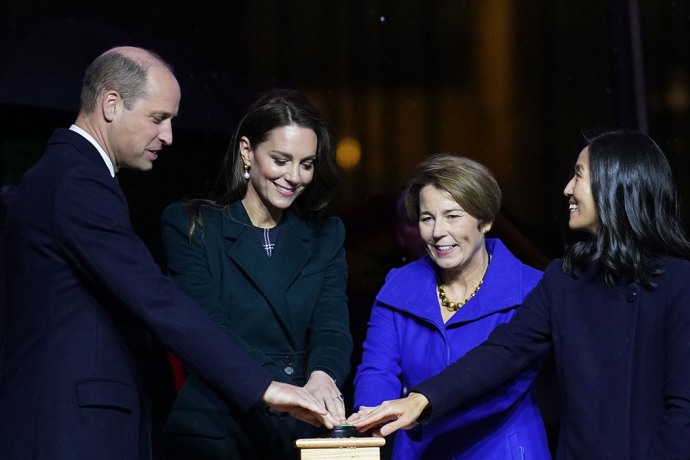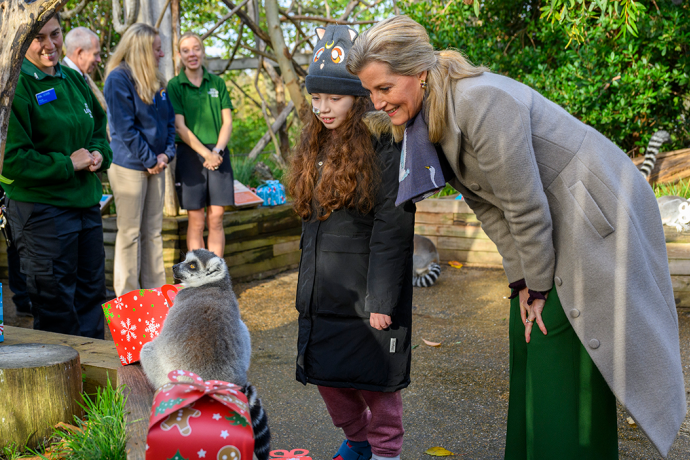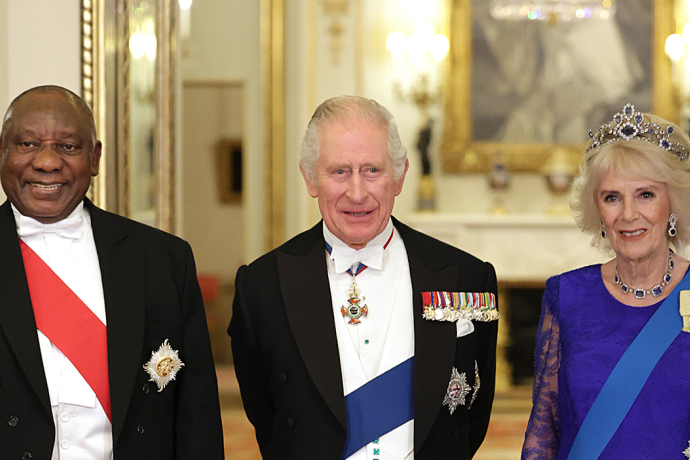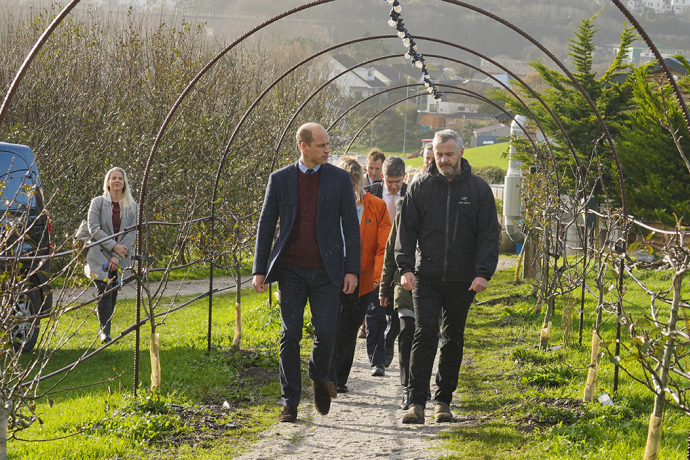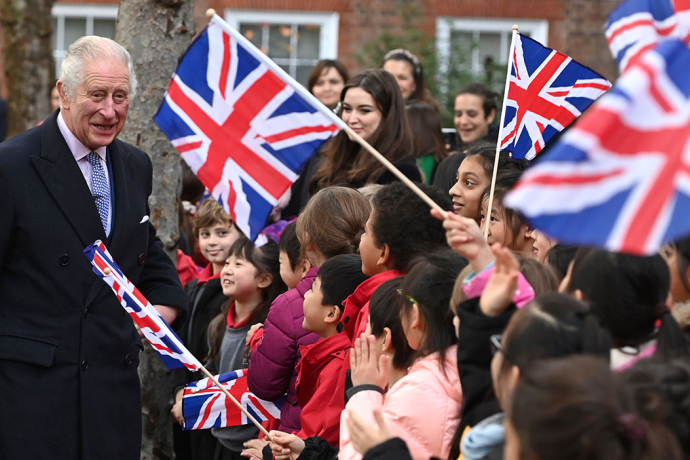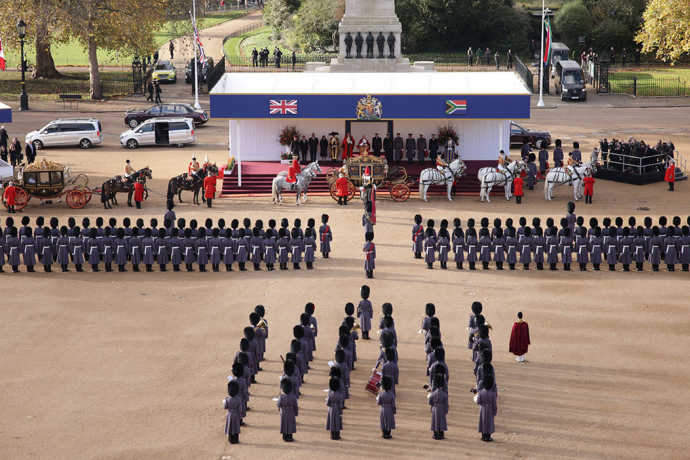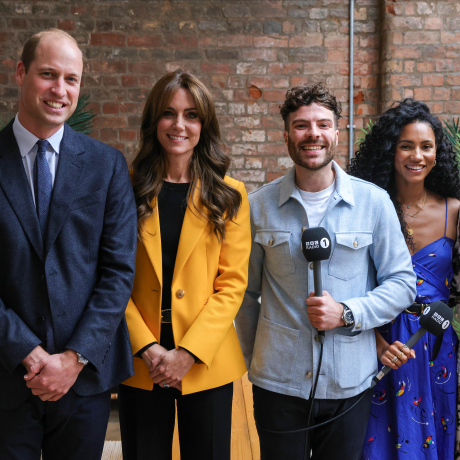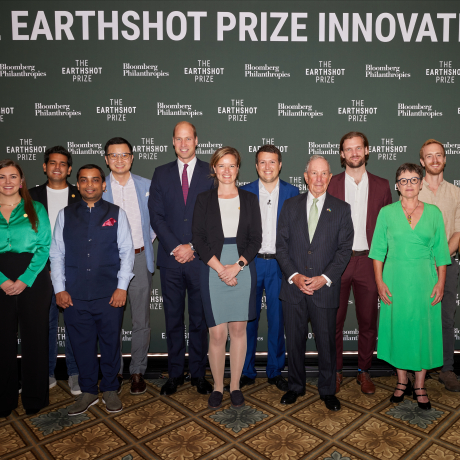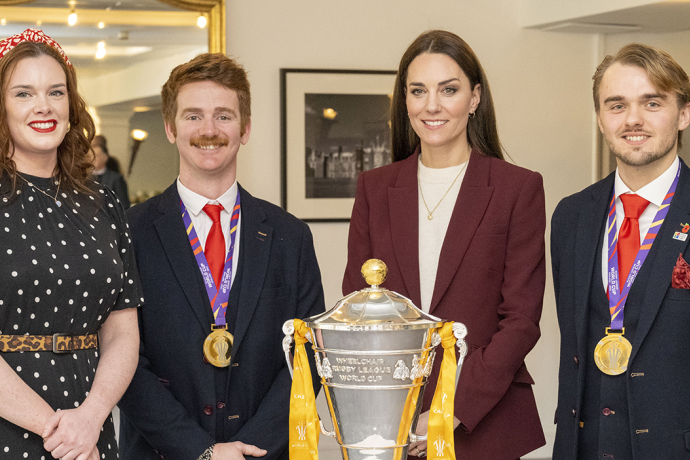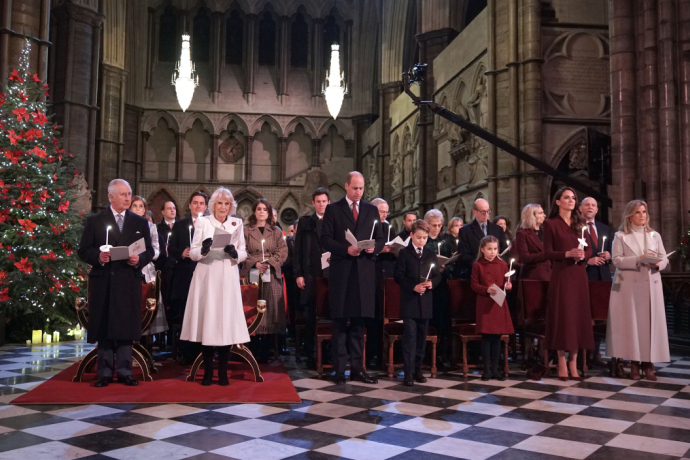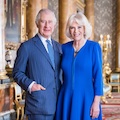The Duke and Duchess of Sussex’s Wedding Outfits to go on Display
Published
The wedding outfits of The Duke and Duchess of Sussex will go on display at Windsor Castle and the Palace of Holyroodhouse in Edinburgh in 2018 and 2019 respectively in a special exhibition 'A Royal Wedding: The Duke and Duchess of Sussex.'
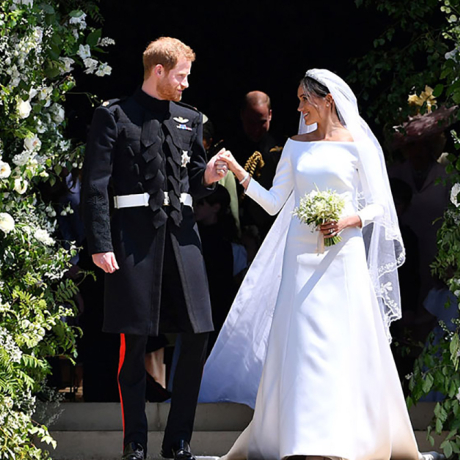
The exhibition is being organised by The Royal Collection Trust, and will feature The Duchess’s dress, shoes and jewellery, and an identical frockcoat to the one worn by The Duke of Sussex on their wedding day, which took place on 19 May 2018 at St George's Chapel, Windsor Castle.
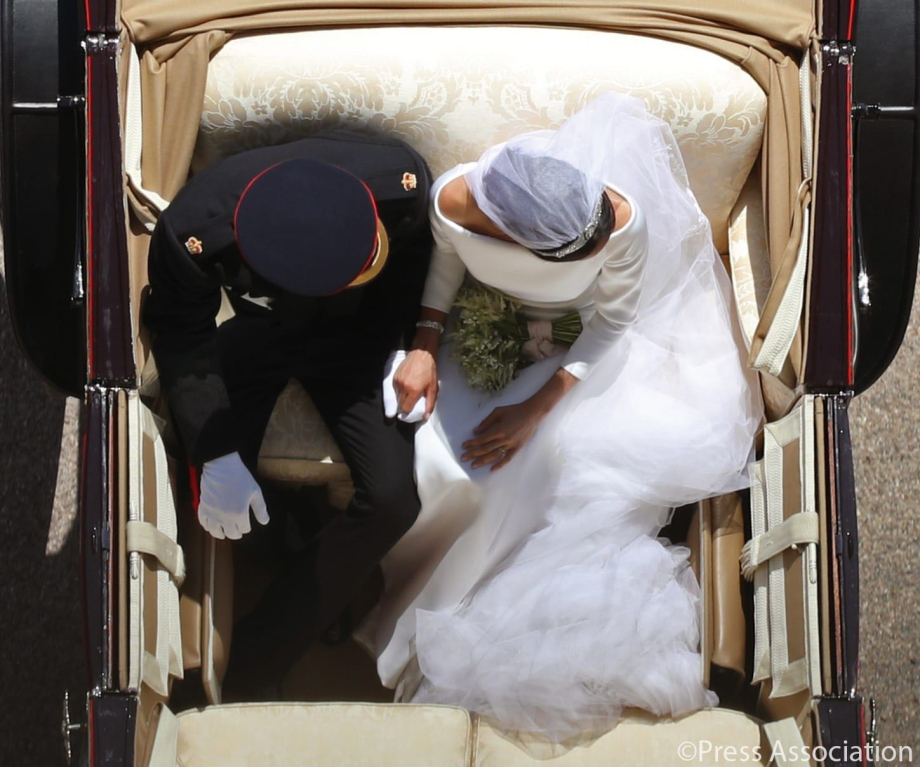
Royal Collection Trust is a charity, responsible for the care of the Royal Collection and manages the public opening of the official residences of Her Majesty The Queen – Buckingham Palace, Windsor Castle and the Palace of Holyroodhouse in Edinburgh. For further information on visiting the exhibition please visit their website.
The Design
The Duchess of Sussex’s wedding dress was created by British designer Clare Waight Keller, Artistic Director at the historic French fashion house Givenchy, and the design is true to the heritage of the house. The focus of the dress is the graphic open bateau neckline that gracefully frames the shoulders and emphasises the slender sculpted waist. The lines of the dress extend towards the back where the train flows in soft round folds cushioned by an underskirt in triple silk organza. The slim three-quarter sleeves add a note of refined modernity.
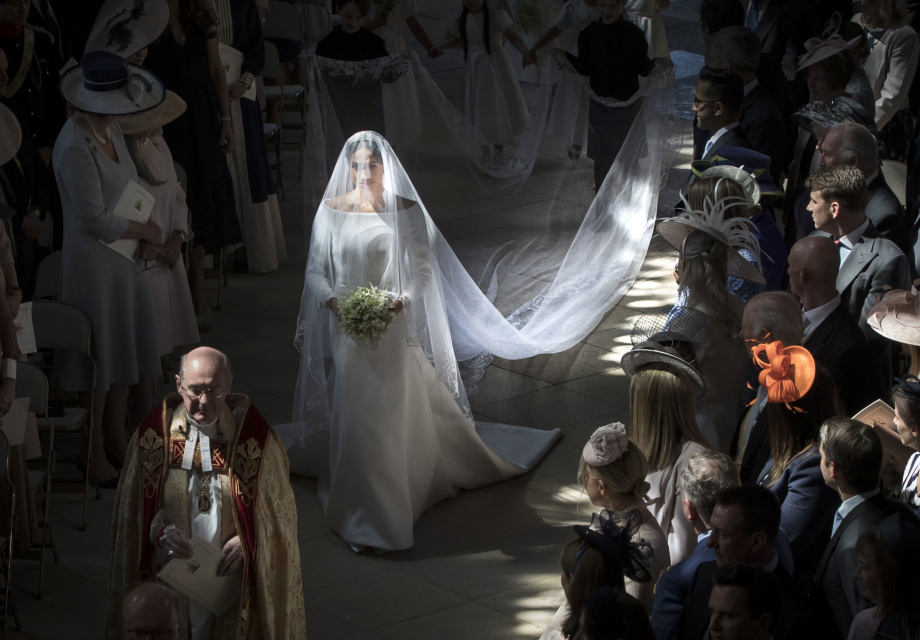
The Fabric
Following extensive research by Ms. Waight Keller in fabric mills throughout Europe, an exclusive double bonded silk cady was developed. Perfect for the round sculptural look required, the silk cady has a soft matt lustre whilst the bonding process and pure white colour chosen by The Duchess and Ms. Waight Keller brings a fresh modernity to the dress.
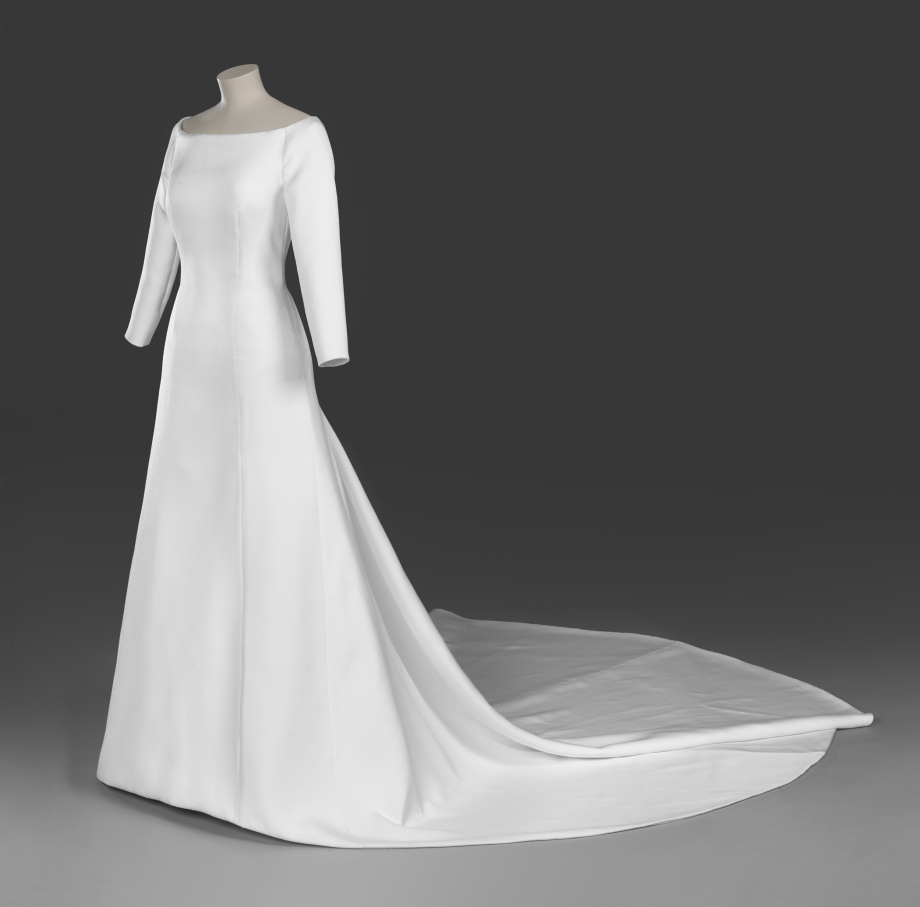
The Veil
Her Royal Highness expressed the wish of having all 53 countries of the Commonwealth with her on her journey through the ceremony. Ms. Waight Keller designed a veil representing the distinctive flora of each Commonwealth country united in one spectacular floral composition. The veil is five meters long and made from silk tulle with a trim of hand-embroidered flowers in silk threads and organza.
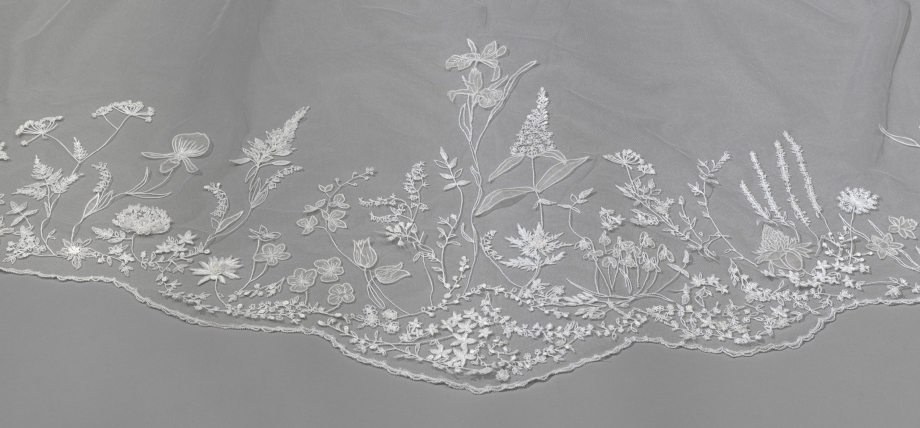
Each flower was worked flat, in three dimensions to create a unique and delicate design. The workers spent hundreds of hours meticulously sewing and washing their hands every thirty minutes to keep the tulle and threads pristine. In addition to the flora of the Commonwealth, The Duchess also selected two personal favourites:
Wintersweet (Chimonanthus praecox), which grows in the grounds of Kensington Palace in front of Nottingham Cottage, and the California Poppy (Eschscholzia californica) the State flower from The Duchess's place of birth, California.
Symmetrically placed at the very front of the veil, crops of wheat are delicately embroidered and blend into the flora, to symbolise love and charity.
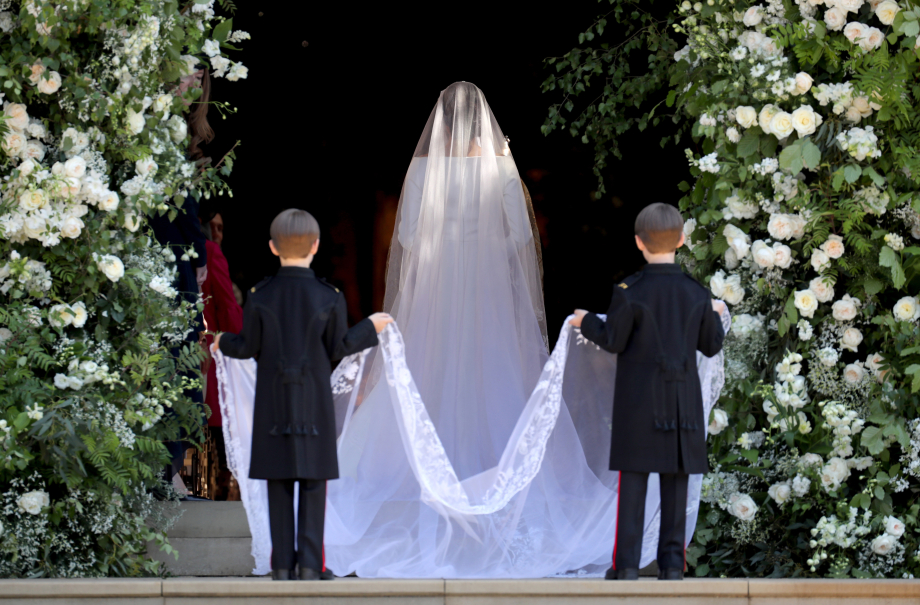
A selection of flora distinctive from every member state of the Commonwealth is listed below:
AFRICA:
- Botswana - Ear of Sorghum and Cat’s Claw (Uncaria tomentosa)
- Cameroon - Red Stinkwood (Prunus africana)
- Gambia - White Variety Orchid
- Ghana - Caladium (Caladium)
- Kenya - The Tropical Orchid
- Lesotho - Spiral Aloe (Aloe polyphylla)
- Malawi - Lotus (Nymphea lotus)
- Mauritius - Trochetia Boutoniana
- Mozambique - Maroon Bell Bean (Markhamia zanzibarica)
- Namibia - Welwitschia (Welwitschia mirabilis)
- Nigeria - Yellow Trumpet (Costus spectabilis)
- Rwanda - Torch Lily (Kniphofia uvaria)
- Seychelles - Tropicbird orchid (Angraecum eburnum)
- Sierra Leone - Scadoxus (Scadoxus cinnabarinus)
- South Africa - Protea (Protea cynaroides)
- Swaziland - Fire Heath (Erica cerinthoides)
- Uganda - Desert rose (Adenium obesum)
- United Republic of Tanzania - African violet (Saintpaulia)
- Zambia - Bougainvillea (Bougainvillea)
ASIA:
- Bangladesh - White Water Lily ( Sada shapla)
- Brunei Darussalam - Simpor (Dillenia suffruticosa)
- India - Indian Lotus (Nelumbo nucifers gaertn)
- Malaysia - Bunga Raya Hibiscus (Hibiscus rosa sinensis)
- Pakistan - Jasmine (Jasminum officinale)
- Singapore - Vanda miss Joaquim Orchid (Miss Joaquim)
- Sri Lanka - Blue Water Lily (Nymphaea nouchali)
CARIBBEAN & AMERICAS:
- Antigua and Barbuda - Agave (Agave karatto)
- Bahamas - Yellow Elder (Tecoma stans)
- Barbados - The pride of Barbados (Caesalpinia pulcherrima)
- Belize - The Black Orchid (Encyclia cochleata)
- Canada - Bunchberry (Cornus canadensis)
- Dominica - Carib Wood (Sabinea carinalis)
- Grenada - Bougainvillea (Nyctaginaceae)
- Guyana - Victoria Regia Water Lily (Victoria amazonica)
- Jamaica - Lignum Vitae (Guiacum officinale)
- Saint Lucia - The rose and the marguerite
- St Kitts and Nevis - Poinciana (Delonix regia )
- St Vincent & the Grenadines - Soufriere Tree (Spachea perforatais)
- Trinidad & Tobago - Chaconia (Warszewiczia coccinea)
EUROPE:
- Cyprus - Cyclamen Cyprium (Cyclamen cyprium)
- Malta - Maltese centaury (Cheirolophus crassifolius
UNITED KINGDOM:
- England - Rose
- Wales - Daffodil (Narcissus)
- Northern Ireland - Flax flower
- Scotland - Thistle
PACIFIC:
- Australia - Golden wattles (Acacia pycnantha)
- Fiji - Tagimaucia (Medinilla waterhousei)
- Kiribati - Bidens Kiribatiensis
- Nauru - Calophyllum
- New Zealand - Kowhai (Sophora microphylla)
- Papua - Sepik Blue Orchid (Dendrobium lasianthera)
- Samoa - Teuila (Alpinia purpurata)
- Solomon Islands - Hibiscus (Hibiscus)
- Tonga - Heilala (Garcinia sessilis)
- Tuvalu - Plumeria (Plumeria frangipans)
- Vanuatu - Anthurium (Anthurium)
Jewellery
The veil was held in place by Queen Mary's diamond bandeau tiara, lent to The Duchess by The Queen. The diamond bandeau is English and was made in 1932, with the centre brooch dating from 1893.
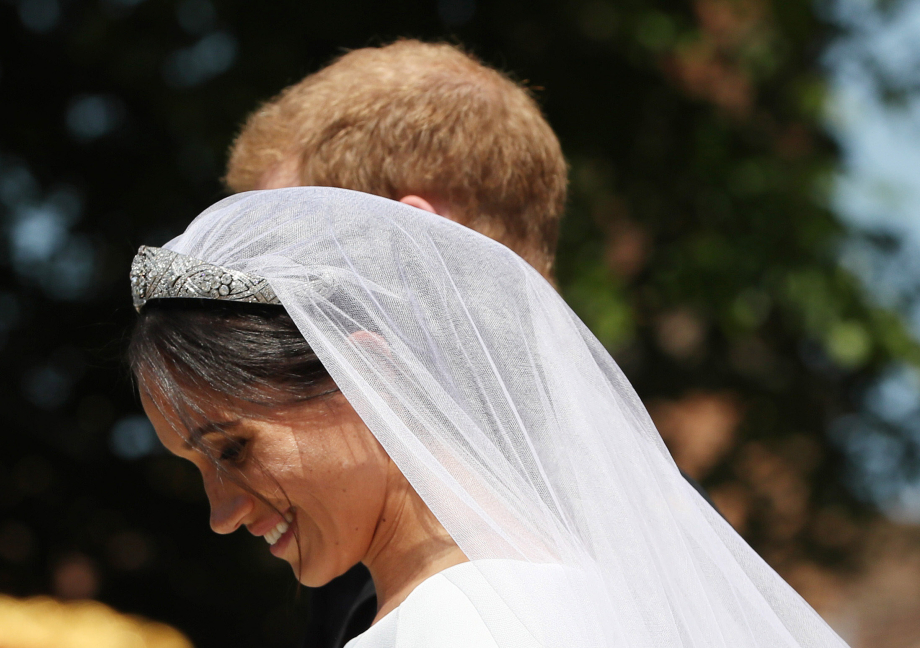
The bandeau, which is made of diamonds and platinum, is formed as a flexible band of eleven sections, pierced with interlaced ovals and pavé set with large and small brilliant diamonds. The centre is set with a detachable brooch of ten brilliant diamonds.
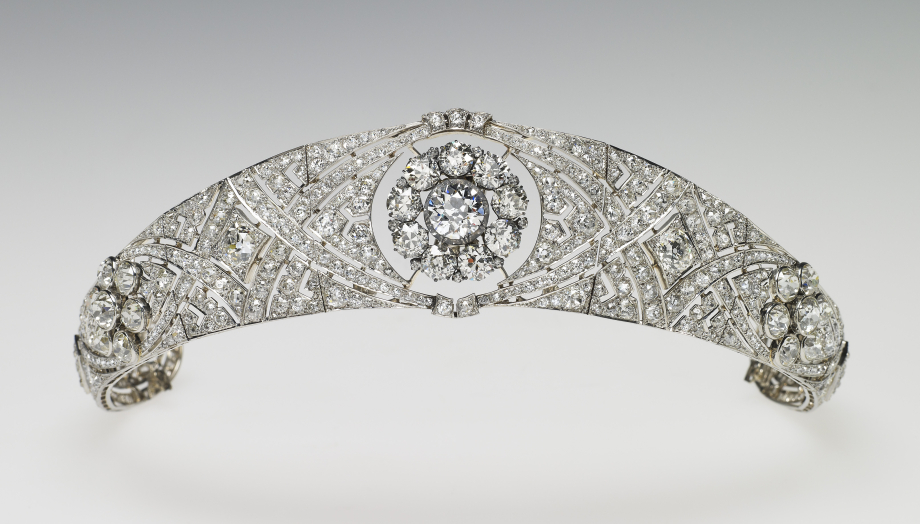
The diamond bandeau was made for Queen Mary and specifically designed to accommodate the centre brooch. This brooch was given as a present to the then Princess Mary in 1893 by the County of Lincoln on her marriage to Prince George, Duke of York. The bandeau and the brooch were bequeathed by Queen Mary to The Queen in 1953.
The Duke of Sussex's outfit
The Duke of Sussex's wedding outfit was the frockcoat uniform of the Household Cavalry (the 'Blues and Royals'), specially commissioned for the occasion and made by tailors at Dege & Skinner on Savile Row. The uniform's single-breasted blue doeskin jacket has figured braiding of Regimental pattern on the stand-up collar and sleeves.
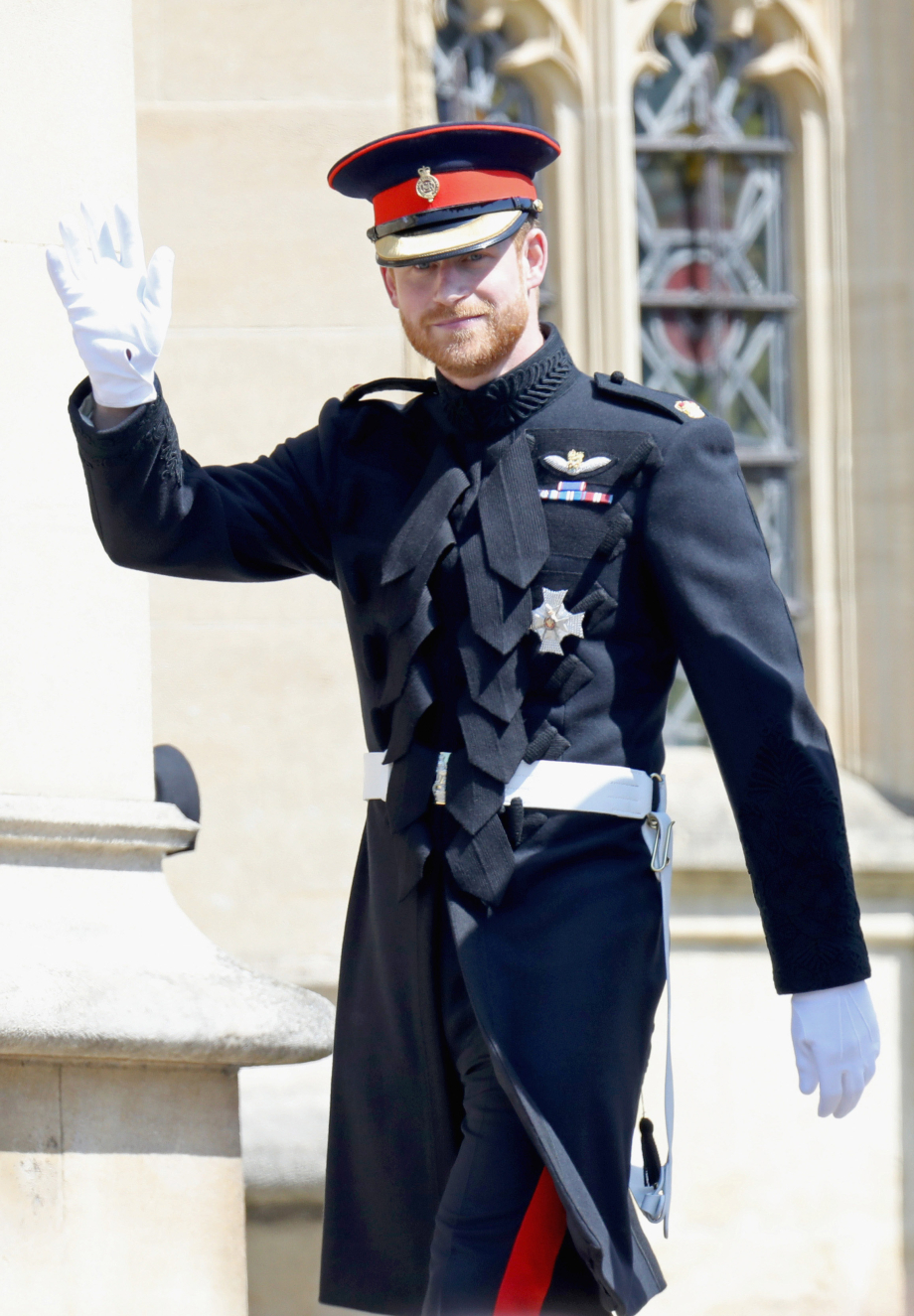
It is ranked to Major with large gold embroidered crowns on the epaulettes. The trousers, officially called 'overalls', are made from a blue and black wool barathea and are fastened by a leather strap and buckle underneath the boot. The Duke has loaned an identical uniform to go on display.
Following the displays, Royal Collection Trust will make a donation to the Royal Foundation. For further information, please visit the Royal Collection's website.
Related content
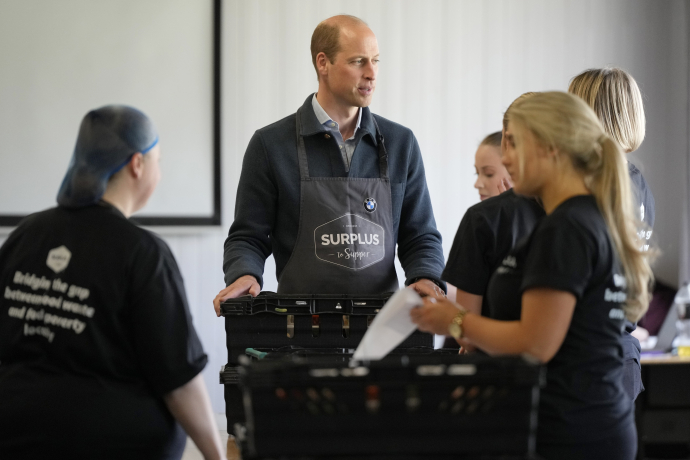
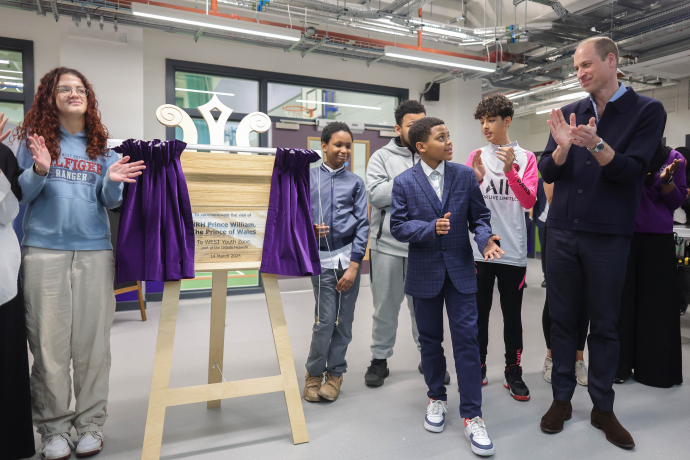
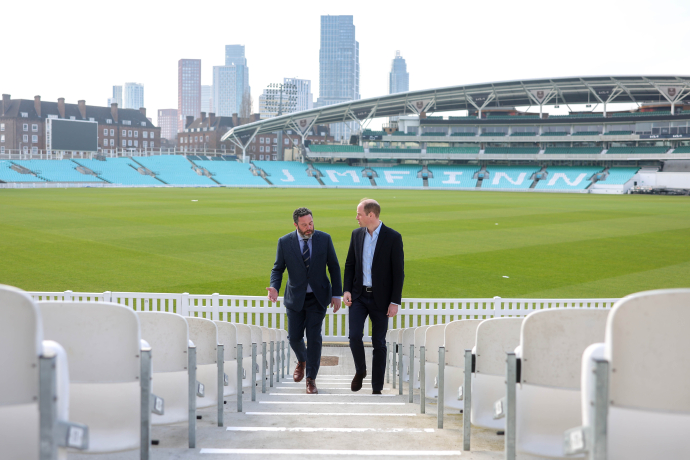
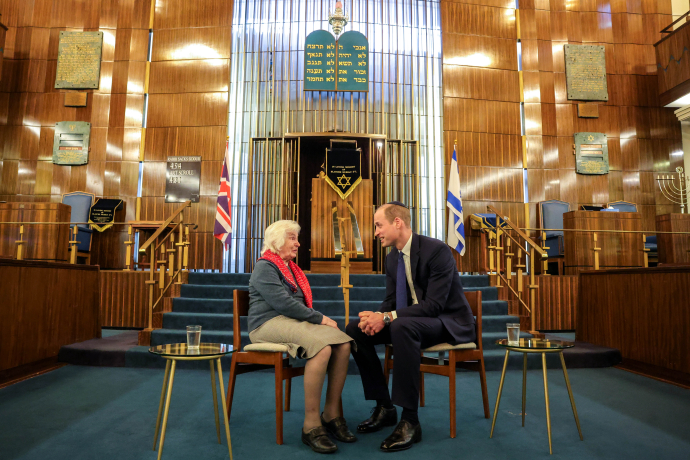
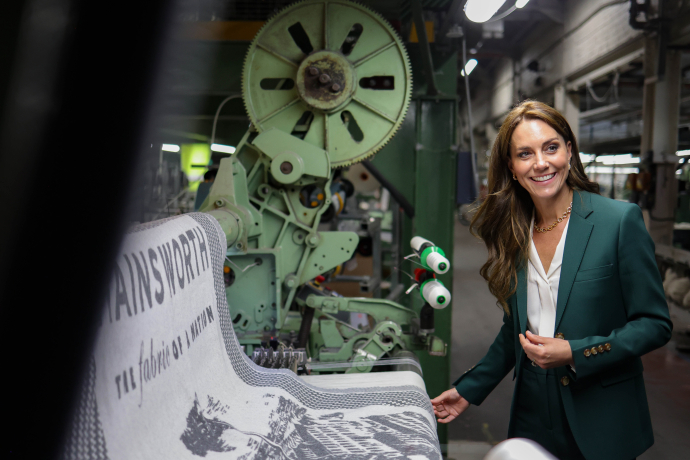


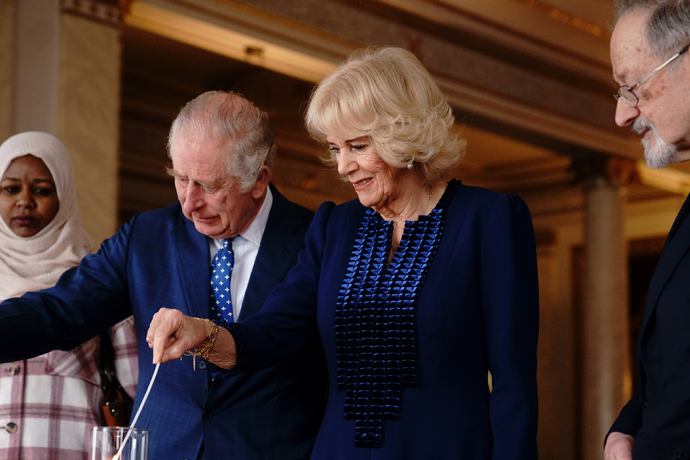
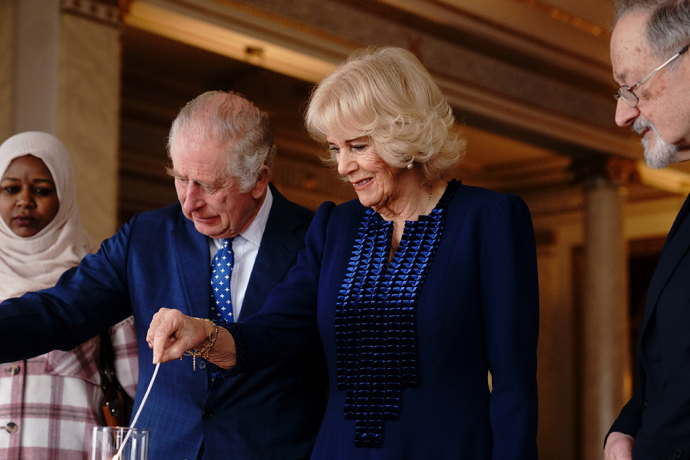
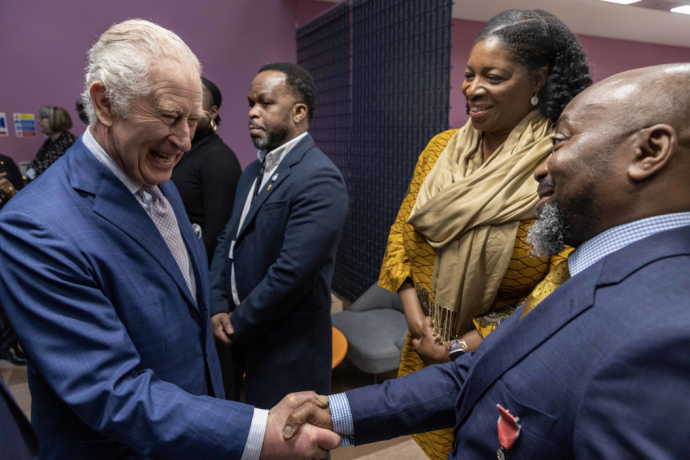
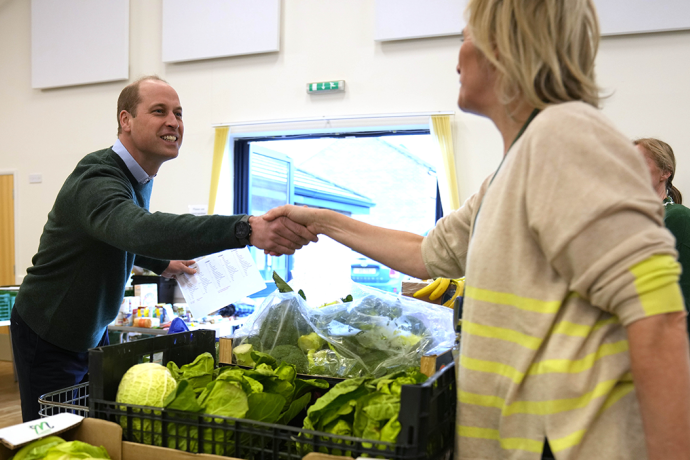
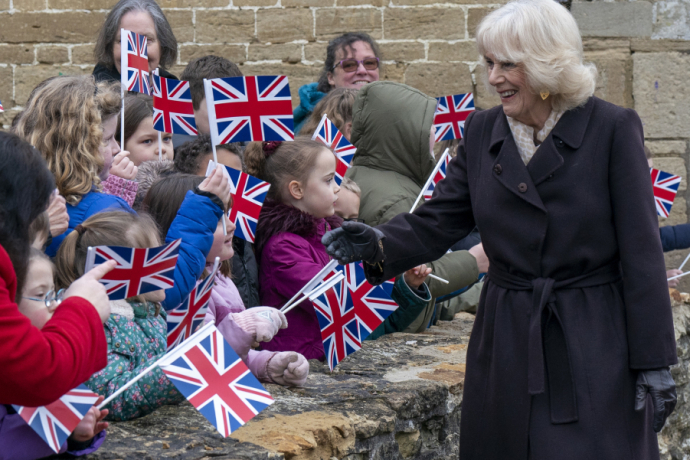
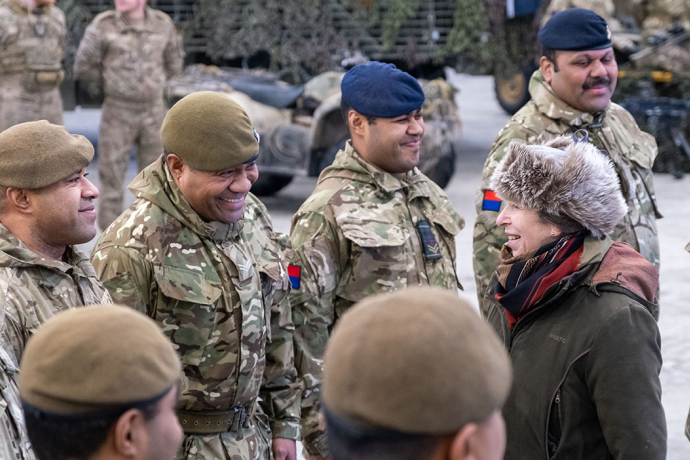
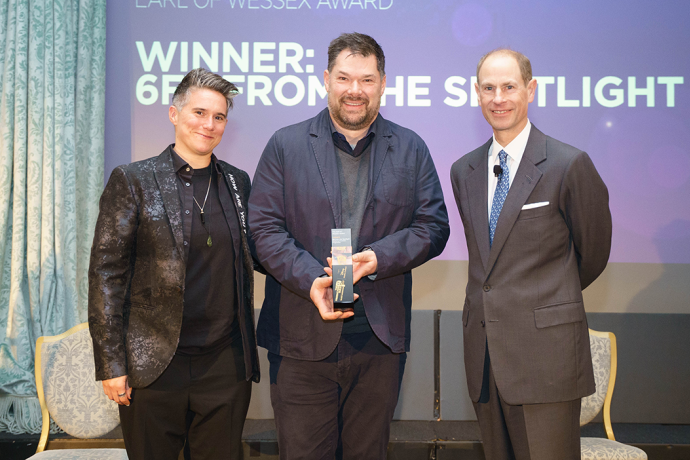
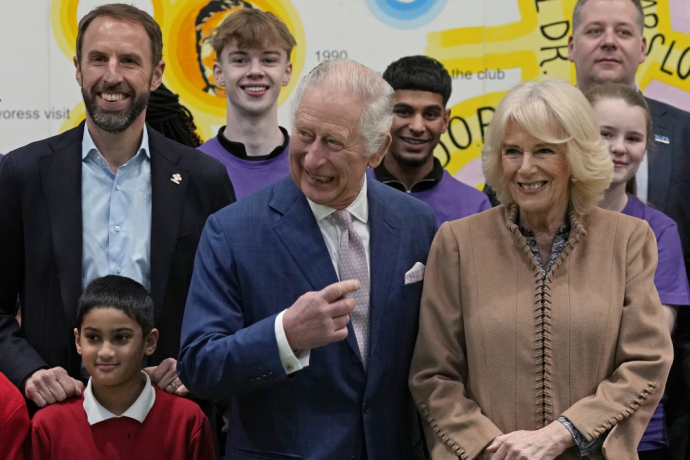
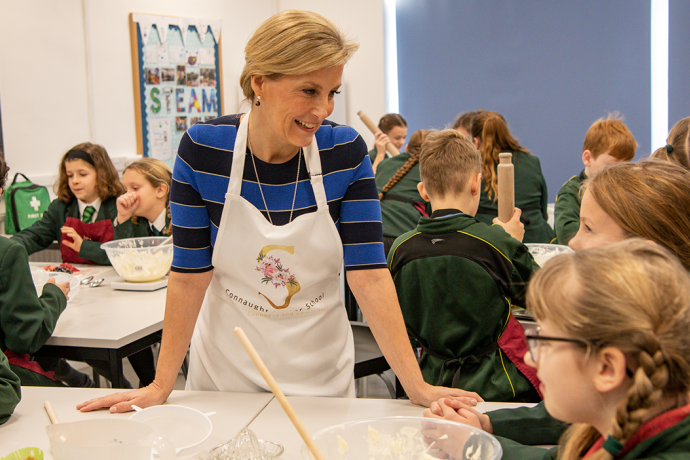
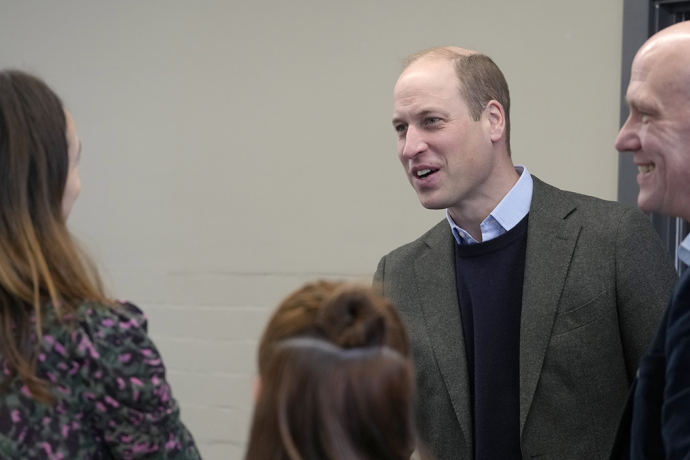
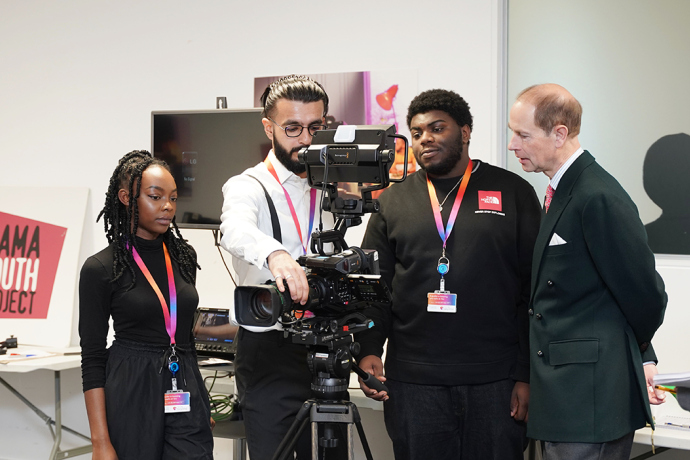
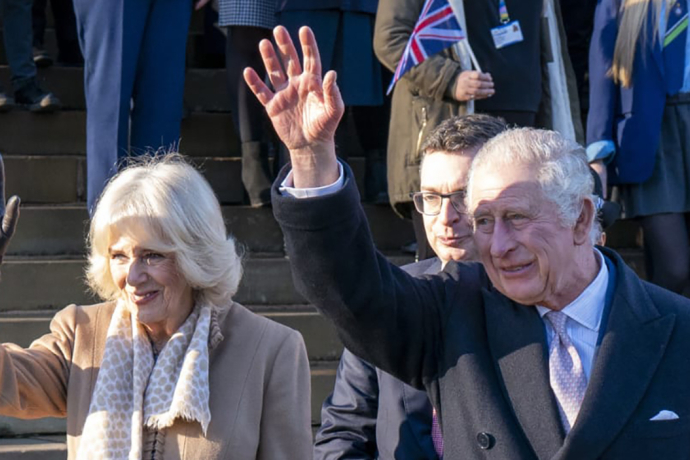
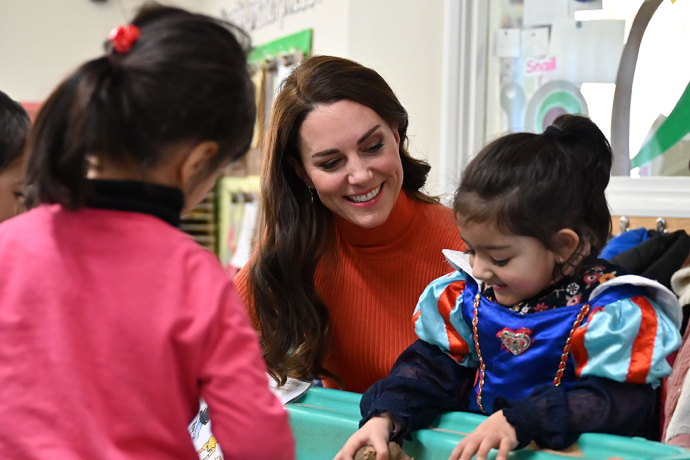
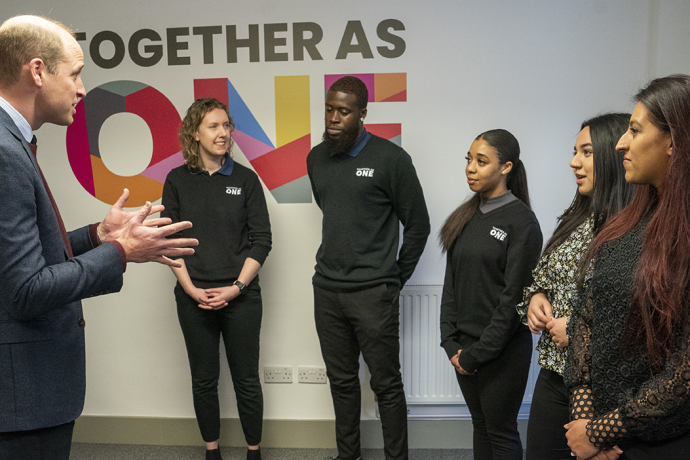
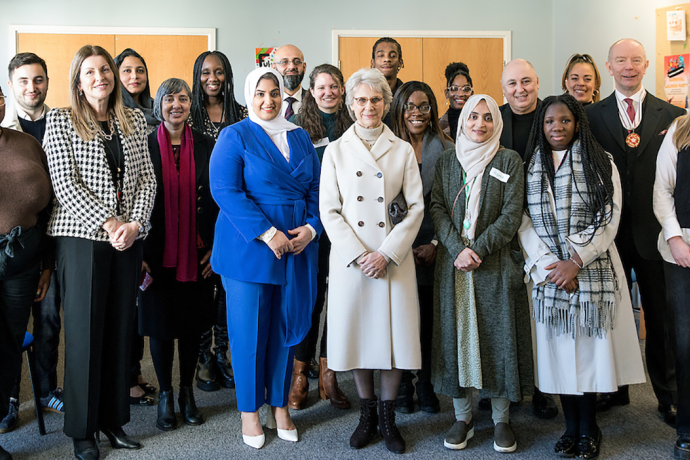
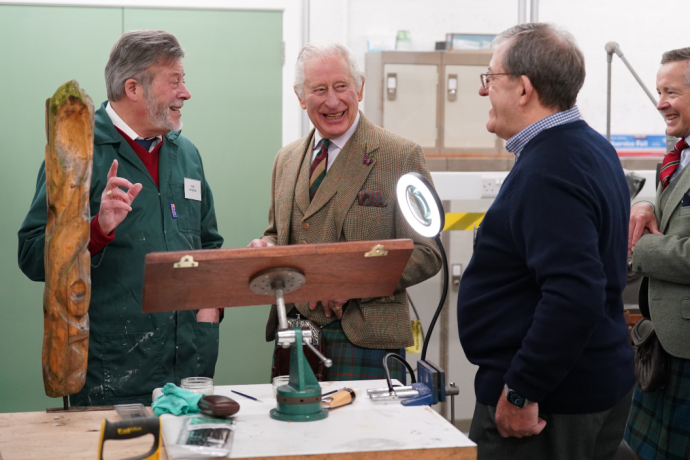
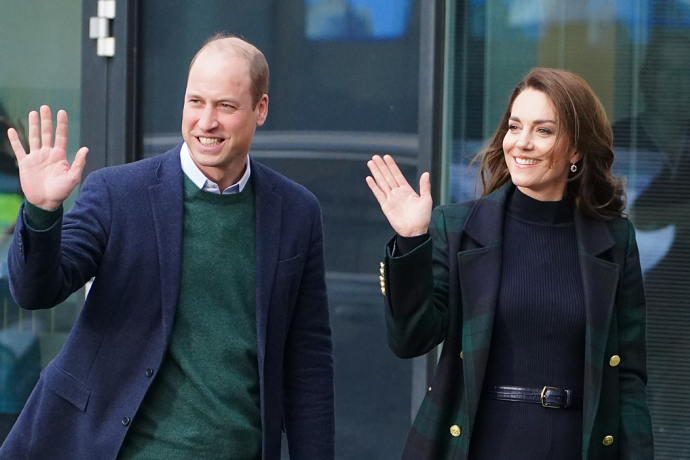
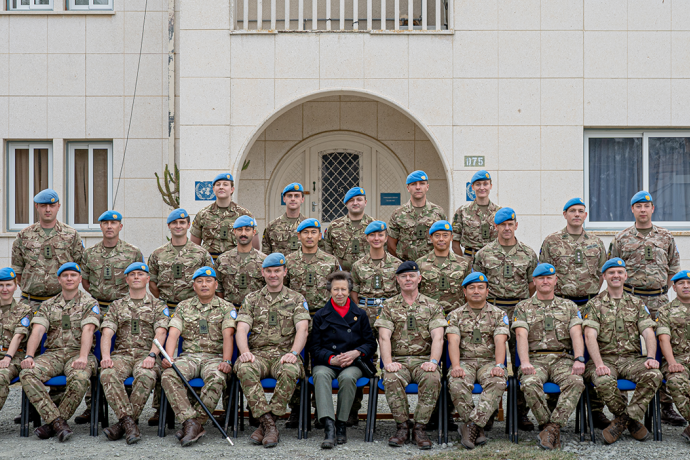
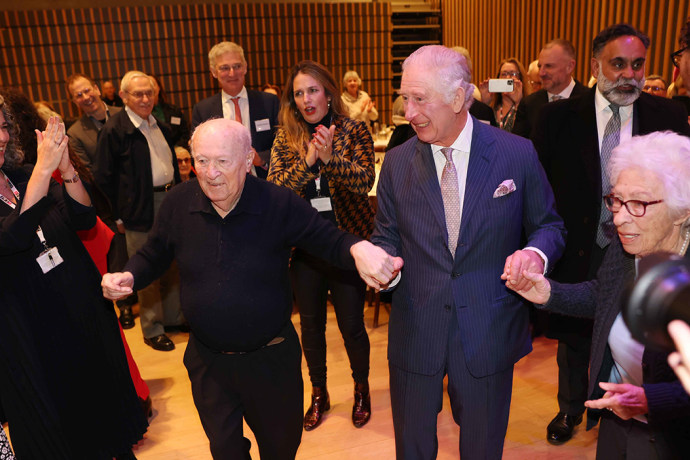
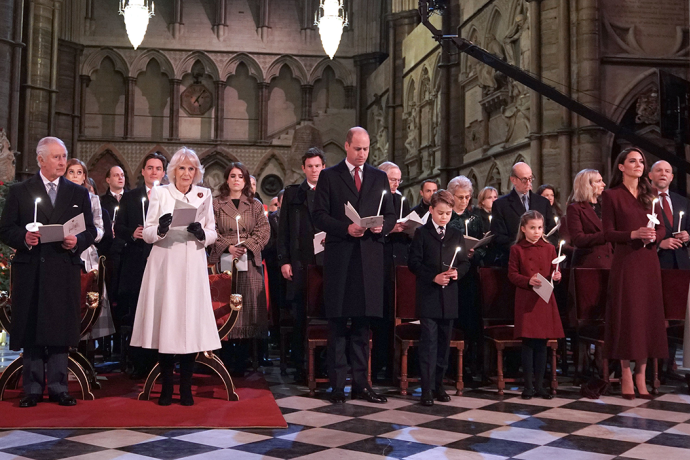
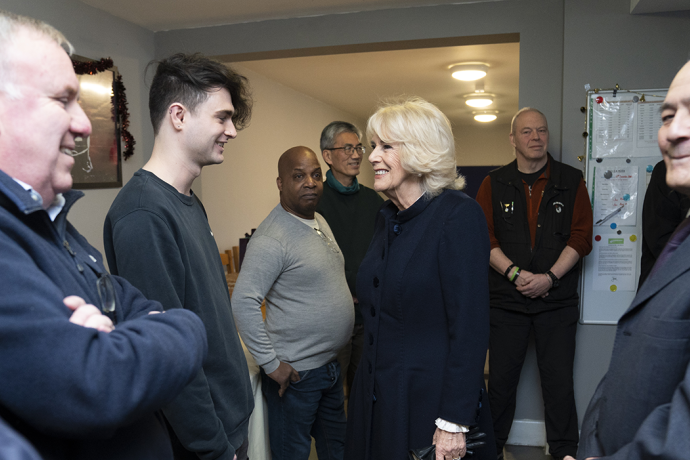
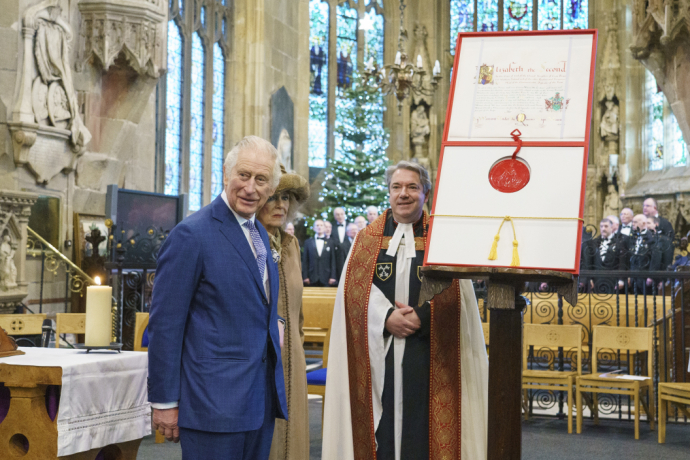
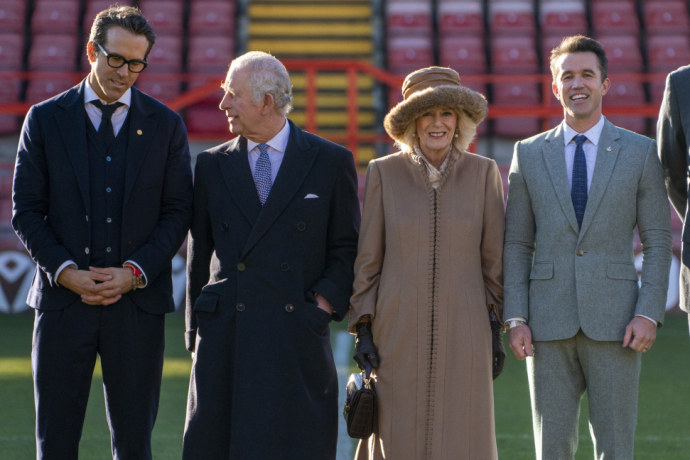
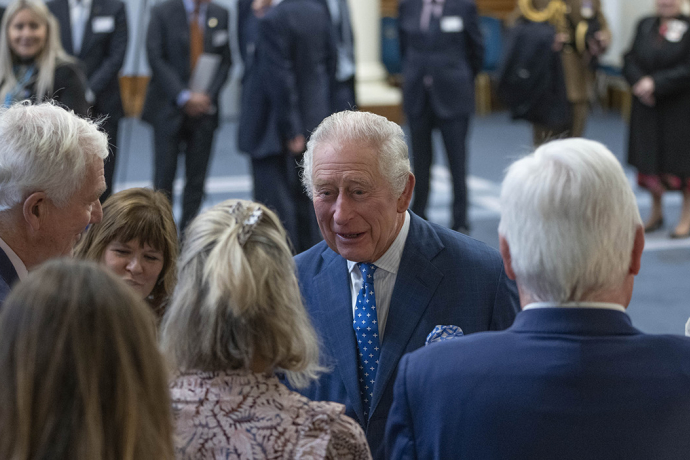
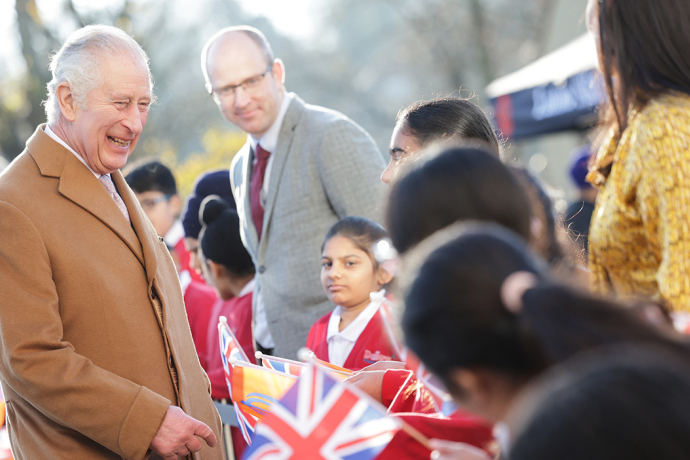
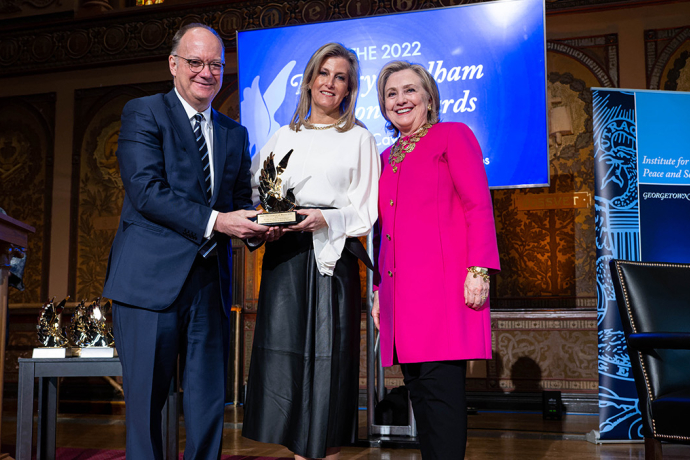
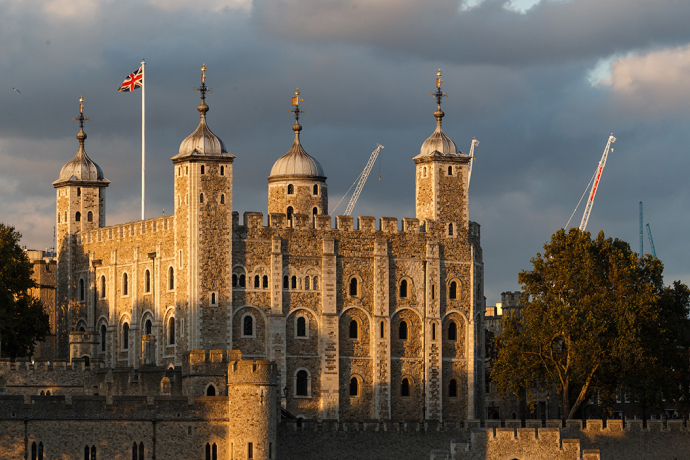
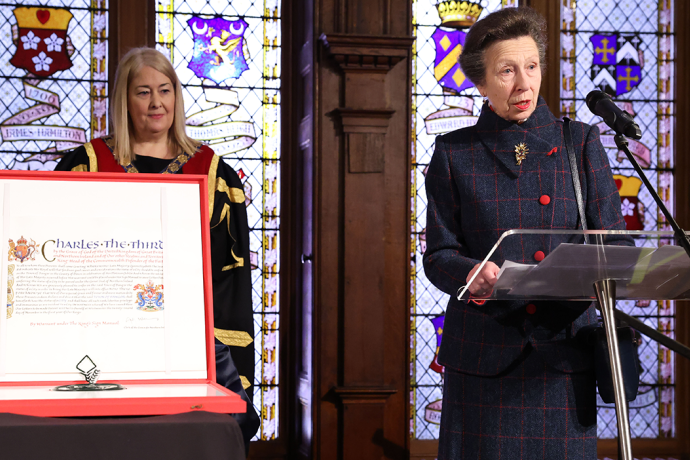

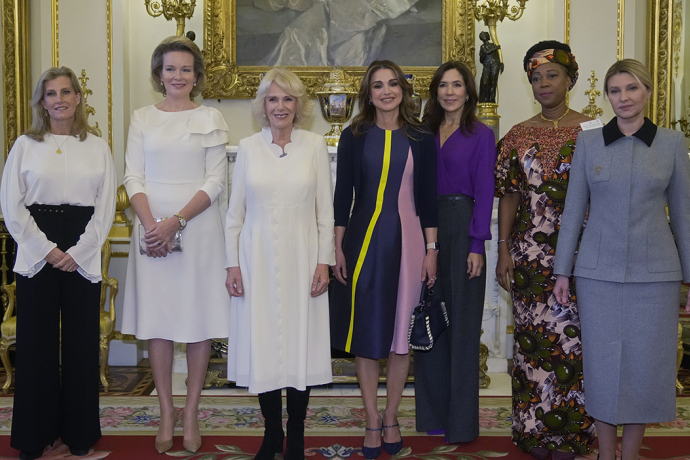
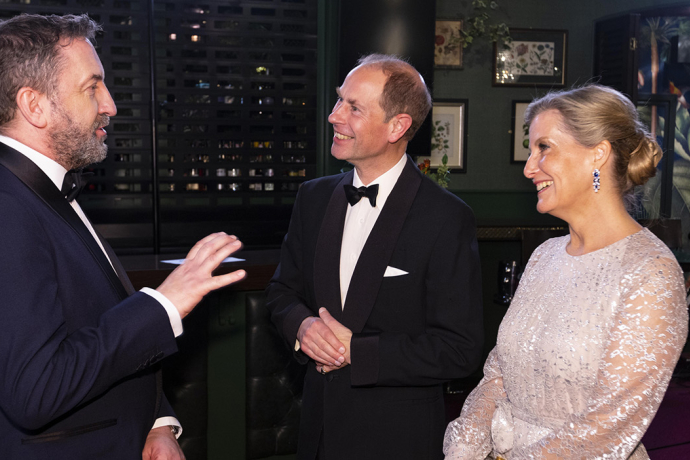

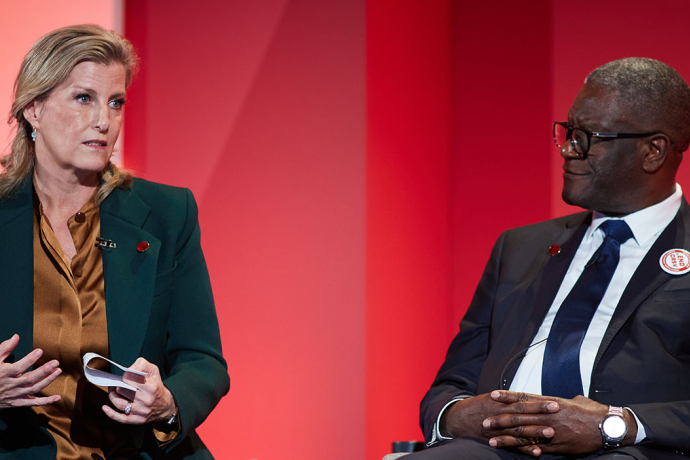
The Prince and Princess of Wales visit Boston for the 2022 Earthshot Prize Awards
28 November 2022